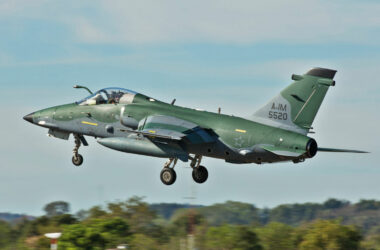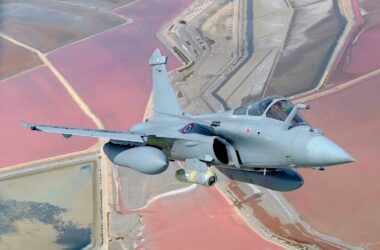Sierra Nevada Corporation (SNC) is not a new company – it was founded in 1963 – nor is it inexperienced in defense contracting, however, victory in the US Air Force (USAF) Survivable Airborne Operations Center (SAOC) program in April marked the beginning of a huge challenge for the Nevada-based group.
Budgeted at US$13 billion, the program aims to replace the dated E-4B Nightwatch, four Boeing 747-200s modified to serve as mobile nuclear command and control outposts for the United States government.
Not surprisingly, the jets are called “doomsday planes” since the scenario in which they will be indispensable is that of a major nuclear conflict.
Boeing, which developed the E-4B, was considered a favorite in the competition as it is also the manufacturer of the 747-8, an aircraft most suitable for receiving systems and equipment.

However, the company disagreed with some aspects of the competition, including the fixed price (it is already struggling to convert two identical 747-8s into new Air Force Ones) and the transfer of the project’s data rights to the USAF.
Given the long term of operation of the aircraft, the Air Force wants to have control of the project to promote updates in the future.
Strong partners
Sierra Nevada, in turn, saw the SAOC contract as a great opportunity to gain muscle in defense projects.
After winning the competition, the company announced six major partners, A&D Collins Aerospace, FSI Defense, GE Aerospace, Greenpoint Technologies, Lockheed Martin’s Skunk Works division and Rolls-Royce.

On another front, Sierra Nevada confirmed the acquisition of five Boeing 747-8 passenger planes from Korean Air. The first of these planes, registration HL7630, has already been stored without the airline’s markings and should be sent to the USA soon.
The company’s plan is to understand all the intricacies of the aircraft in order to facilitate the implementation of systems without compromising 747 equipment that has worked well for decades.
Follow Air Data News: WhatsApp | Google News | Instagram | LinkedIn | Twitter | Facebook
In addition to using one of five planes to explore all aspects of the future platform in a huge hangar built at Dayton International Airport, Sierra Nevada intends to create a digital version of the new doomsday plane.

To do this, digital scans will be carried out to build a computerized model, a process similar to what Boeing itself does with an MD-90 that will be used in NASA’s X-66A concept.
The work is necessary because SNC is not a manufacturer of the original equipment and therefore does not yet have access to all information about it. It is a delicate task due to intellectual property issues as well.
Long-term program
The Survivable Airborne Operations Center (SAOC) program should only be completed in 2036 and until then, Sierra Nevada will have a few years to mitigate risks, add a dozen 747-8 airframes and build the first planes.
Among the systems that will be incorporated are protection against nuclear radiation, a receptacle for aerial refueling and communication technologies capable of operating even in a degraded environment.
“SNC has built a reputation as a trusted partner in delivering transformative solutions that help safeguard freedom,” said SNC CEO and owner Fatih Ozmen. “With a focus on open architecture, our SAOC proposal concentrated on providing the services we are widely known for: best-of-breed innovative solutions. We are ready and excited for the opportunity to design the mobile command center of the future.”






